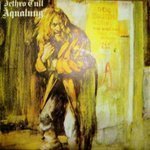Acupuncture or massage to treat chronic pain
-
Recently Browsing 0 members
- No registered users viewing this page.
Announcements
-
Topics
-
-
Popular Contributors
-
-
Latest posts...
-
11
Thai Language - how long did it take you to read, write, listen and speak Thai well?
Apparently we are forbidden from reading and writing Thai here. It is going to make learning it hard. The best way to learn Thai is to actually use Thai. It is a bit like golf, you can talk about it all day long but unless you actually physically play it you won’t ever know how to do it. -
17
Prince Andrew 'summons maids to pick up used tissues'
I have had several people tell me that their test for going into any kind of business partnership is to observe how the potential partner treats waiters and/or waitresses. "That is the way they will utlimately treat you". -
316
‘Putin clearly won’: Pundits say meeting was ‘bad for Americans’
We live in the present and Putin suffers from delusions of grandeur comparing himself to centuries past Russian heroes. Like Hitler, an early death could have saved so many lives.- 1
-

-
11
Bringing back a bottle!
Years ago but bought a bottle of whiskey for the family at duty free at Don Meang after flying in International but had to pour it in the bin before boarding a domestic flight. Unless things have changed the answer is no. -
9
NES English teacher in Thailand
So, you're teaching Neuro-Electric-Stimulation in Thailand? Interesting. Can I have more details, please? -
70
Middle East Israeli Forces Push Gaza Evacuations Amid Tragic Attacks
The World is waking up to who the real new Nazis are . Palestinians have lost mass support recently and they have been banned and expelled from numerous Countries . The tide has turned
-
-
Popular in The Pub






.thumb.jpg.3ee24d9400fb02605ea21bc13b1bf901.jpg)




Recommended Posts
Create an account or sign in to comment
You need to be a member in order to leave a comment
Create an account
Sign up for a new account in our community. It's easy!
Register a new accountSign in
Already have an account? Sign in here.
Sign In Now